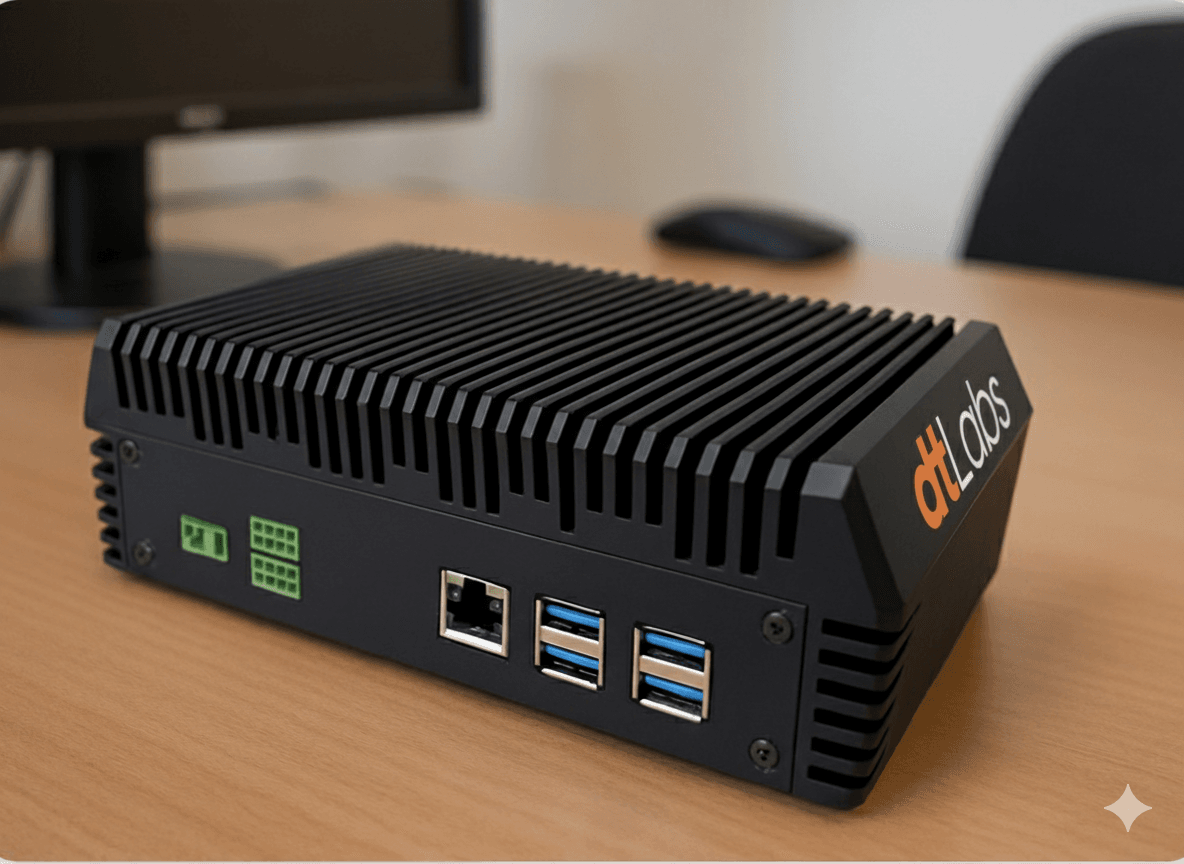Sumário
Imagine a world where machines can think, learn, and even create. This world is no longer science fiction—it’s the reality we are living in, thanks to Artificial Intelligence (AI). This technology is rapidly transforming our society, influencing everything from how we interact with our smartphones to how companies make strategic decisions. Its presence is increasingly ubiquitous, shaping the future of work, healthcare, education, and practically every aspect of our lives.
A Brief History of AI
The history of Artificial Intelligence (AI) is marked by visionary advances and challenges that have shaped the field over the decades. A fundamental milestone occurred in 1943 when American researchers Warren McCulloch (a neuropsychologist and cyberneticist) and Walter Pitts (a logician and cognitive scientist) created the first computational model for neural networks based on mathematics and algorithms.
This model, known as the “McCulloch-Pitts neuron”, described how biological neurons process information, simplifying them into binary units that are activated or not based on input signals.
In 1950, Alan Turing published an article titled “Computing Machinery and Intelligence”, where he proposed the famous “Turing Test”, which sought to answer the question “Can machines think?” practically: if during a conversation a computer could deceive a human, making them believe they were interacting with another person, it would be considered intelligent.
However, the term “Artificial Intelligence” was officially coined in 1956 during the Dartmouth Conference, organized by John McCarthy and other pioneers. This event marked the official birth of the field as an academic discipline. From there, the first programs and systems began to emerge, demonstrating rudimentary aspects of intelligence.
In 1957, Frank Rosenblatt presented the perceptron, an artificial neural network model designed to recognize patterns and learn from data. This was the first practical implementation of a system capable of adjusting weights based on errors to improve its performance, something widely publicized as a revolutionary innovation.
In the 1960s, Joseph Weizenbaum developed ELIZA, a program that simulated a therapy session using natural language processing. This was the world’s first chatbot and showed the potential of machines to interact linguistically with humans.

Shakey, considered the world’s first mobile robot equipped with artificial intelligence, emerged between 1966 and 1972, at the Stanford Research Institute (SRI) in Menlo Park. It was able to perceive its environment through cameras and sensors, reason about its actions, and execute complex commands by dividing them into smaller subtasks. Although slow and limited by today’s standards, Shakey represented a significant advance in the integration of robotic mobility and AI.
The 1990s brought significant advances to AI. Artificial neural networks gained prominence again after decades of stagnation, allowing advances in pattern recognition and decision-making. In 1997, IBM’s Deep Blue supercomputer defeated Garry Kasparov, then world chess champion. This event marked a watershed in the history of AI by demonstrating that machines could outperform humans in highly complex cognitive tasks.

Almost two decades later, an even greater feat was achieved: in 2016, AlphaGo, a program developed by the British company DeepMind, defeated the South Korean Lee Sedol, a world champion in Go, a board game considered even more complex than chess.
Today, we are living through what many call the “renaissance of AI”, driven by advances in computing power and data availability. This historical trajectory reflects not only the technological evolution of AI, but also its ability to inspire scientists and engineers to explore the limits of what machines can achieve.
AI Types: Unveiling Characteristics and Differences
When we talk about AI, it’s important to understand that there are different types and approaches, each with its own characteristics and applications. Let’s explore the main types of AI and their particularities.
Artificial Narrow Intelligence (ANI), also known as Weak AI, is the most common type today, and it is designed to perform specific tasks with great efficiency. It is present in virtual assistants such as Siri, Alexa, and Google Assistant, in recommendation systems used by streaming platforms, in navigation systems that help us find faster routes, and in customer service chatbots. Although highly specialized, ANI is limited to its specific domain of operation.

On the other hand, Artificial General Intelligence (AGI), or Strong AI, seeks to replicate the versatility of human intelligence. Although still mainly theoretical, AGI would be able to understand, learn, and adapt to a wide range of tasks and contexts, similarly to human beings.
One step further, Artificial Superintelligence (ASI) represents a hypothetical level of AI that would significantly surpass human intelligence in virtually every aspect, being still a speculative concept and the object of many ethical and philosophical debates.
An emerging and fascinating field is Generative Artificial Intelligence, focused on creating original content. Generative AI systems can produce texts, images, music, and even videos based on their training. ChatGPT for text generation and Midjourney for image creation are notable examples.

Computer Vision deserves special mention. This area of AI allows machines to “see” and interpret the visual world similarly to humans. This involves pattern and object recognition, allowing the identification and classification of objects in images and videos. A technique related to this area is facial detection, the name given to the ability to recognize and analyze facial features, used in security systems and image editing applications.
Motion tracking makes it possible to monitor and analyze movements in video sequences, which is crucial for surveillance systems and sports analysis. 3D reconstruction allows the creation of three-dimensional models from 2D images, being applicable in augmented reality and geographic mapping. Finally, image segmentation makes it possible to divide images into meaningful segments, essential for medical analysis and satellite image processing.

Computer Vision has applications in various sectors, including industrial automation, autonomous vehicles, medical diagnosis, and augmented reality. Its ability to process and interpret visual information quickly and accurately makes it a powerful tool for automation and decision-making based on visual data.
AI Benefits: Transforming Businesses and Lives
Artificial Intelligence (AI) has proven to be a transformative force in both the corporate world and everyday life, offering benefits that go far beyond task automation.
For companies, AI represents an opportunity to optimize processes, improve operational efficiency, and create more personalized experiences for customers. One of the most obvious benefits is the automation of repetitive and time-consuming tasks, such as primary customer service, inventory management, and information triage. This not only reduces operating costs but also frees employees to focus on more strategic and creative activities.
For example, e-commerce companies use AI to plan work shifts in their distribution centers, optimizing human and logistical resources. In addition, technologies such as Robotic Process Automation (RPA), when combined with AI, allow complex tasks to be performed with greater precision and agility.
Another significant impact of AI is its ability to analyze large volumes of data in real time, identifying patterns and trends that would be impossible to detect manually. This allows for more informed and agile decision-making, essential in areas such as marketing, risk management, and product development.
In retail, for example, machine learning algorithms help companies predict demand more accurately, adjust inventories, and even personalize pricing strategies. This predictive analysis not only improves financial results but also reduces waste and increases customer satisfaction.
Personalization is another central benefit of AI. With the use of intelligent systems that analyze individual preferences, purchase history, and online behavior, companies can offer highly personalized experiences to their customers. This translates into accurate product recommendations, targeted marketing campaigns, and more relevant interactions across digital channels. Advanced chatbots also play an important role in this context, providing 24/7 support with quick and effective answers.
In addition, AI has contributed to innovation by enabling the development of new products and services tailored to market needs. Its ability to learn from historical data and adapt continuously allows organizations to anticipate trends and create solutions aligned with consumer expectations, generating a competitive edge in the market.
For individuals, the benefits of AI are equally transformative. AI-based tools are making everyday activities simpler and more efficient. Applications that help navigate traffic in real-time or systems that monitor our health through wearable devices are practical examples of this transformation. In the medical field, for example, advanced algorithms can diagnose diseases with greater accuracy than humans in certain cases, or even predict future conditions based on genetic data or clinical histories.

With its unique ability to integrate intelligent automation, predictive analysis, and personalization on a global scale, Artificial Intelligence is shaping a future where companies can operate more efficiently while offering superior experiences to customers. For individuals, it is creating a more connected and accessible world, where the barriers between technology and everyday life continue to disappear.
The Future of AI: A Sea of Possibilities
Looking to the future, the potential of AI is truly exciting. We are on the verge of revolutionary advances in areas such as personalized medicine, adaptive education, and even the search for solutions to global challenges such as climate change. As AI continues to evolve, we are likely to see the emergence of increasingly sophisticated systems capable of abstract reasoning and creativity.
However, with great power comes great responsibility. As we move forward on this exciting journey, it is crucial that we carefully consider the ethical and social implications of AI. Issues such as privacy, algorithmic bias, and the impact on the labor market need to be addressed proactively.
Artificial Intelligence is not just a technology—it’s an ongoing revolution that is reshaping the world around us. By understanding its foundations, history, and potential, we can better prepare ourselves to embrace the opportunities and face the challenges it brings. The future of AI is bright, and we all have a role to play in shaping that future for the benefit of humanity.



